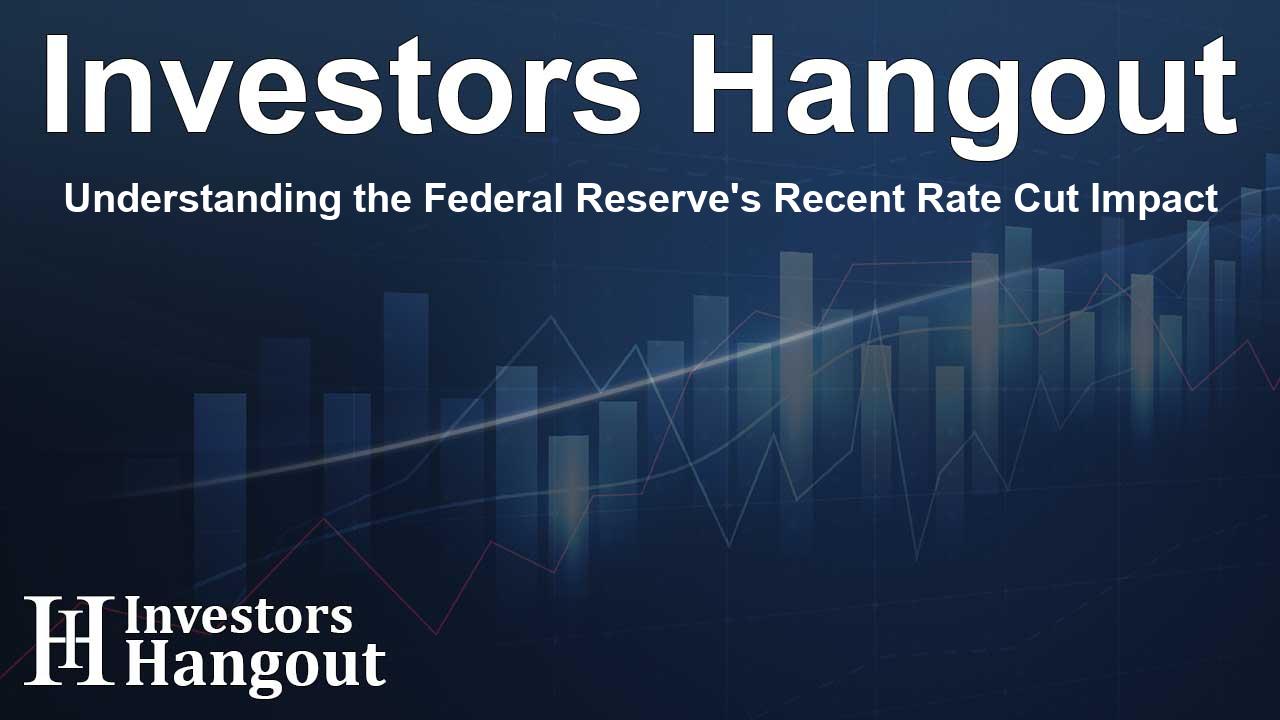Understanding the Federal Reserve's Recent Rate Cut Impact

Federal Reserve's Bold Move: Interest Rate Cut Explained
The Federal Reserve recently made headlines with its decision to cut interest rates, marking a significant shift in monetary policy. This momentous occasion marks the first reduction in rates since the initial months of the pandemic, reducing benchmark rates by half a percentage point. Analysts are keenly observing the implications of this decision, particularly as it comes amid a background of a cooling labor market.
As growth in job numbers slows and inflation shows signs of easing, the Federal Open Market Committee (FOMC) took this notable step, initiating a 50 basis point cut to the key overnight lending rate. This decision meets the shifted expectations of the market towards a more assertive rate reduction, demonstrating a pivot in strategy not seen since the financial crisis over a decade ago.
The federal funds rate now targets a range of 4.75% to 5%. While this rate primarily governs short-term lending between banks, it has broader ramifications for various consumer loans, such as mortgages, automobile financing, and credit card interest charges.
In addition to the immediate rate cut, the FOMC has indicated future reductions may follow. Their recent projections, often referred to as the "dot plot," suggest that an additional 50 basis points of cuts may materialize before year-end, closely mirroring market forecasts.
Interestingly, Fed officials' projections suggest that the total reduction could reach a full percentage point by the end of 2025, with further cuts anticipated into 2026. The dot plot suggests a potential total decrease of around 2 percentage points beyond the latest adjustment, a significant alteration in the monetary landscape.
Following the Fed's announcement, the market experienced notable volatility, underscoring the dramatic impact that such monetary policy changes can have. The S&P 500 experienced a rollercoaster of fluctuations, briefly gaining a 1% rise before settling back down by the end of trading. Both the Dow Jones Industrial Average and S&P 500 witnessed intraday peaks before retreating, demonstrating the cautious sentiment in investor behavior.
What Analysts Predict for the Immediate Future
Industry experts were quick to analyze the implications of the Federal Reserve's first major rate cut in years.
Insights from Wells Fargo
Wells Fargo analysts expressed that it remains uncertain if the next move will also be a significant 50 basis points or a moderated advance of 25 basis points. They highlight that upcoming employment reports over the next few months will play a pivotal role in shaping the Committee's decisions in the later part of the year. Their expectation is that the federal funds rate may seek a neutral benchmark by around this time next year, estimating it around 3.00% to 3.25%.
The Perspective of Citi
Citi offered insights indicating that the recent rate cut underscores a decisive shift from concern about inflation risks towards a more pressing focus on the labor market. The firm anticipates that the unemployment rate could increase, with predictions for a total of 125 basis points in cuts this year, alongside further adjustments in the months to follow.
ING's Forecast
ING echoes a sentiment of caution while also remaining optimistic that strategic rate reductions can navigate the economy away from recession. The aim is to reach a rate of about 3.5% by the mid-year mark, contingent upon maintaining actions similar to those taken in the mid-1990s under the guidance of Alan Greenspan.
RBC Capital Markets' Expectations
RBC Capital Markets maintain that a pause in rate changes may surface in early 2025, as the current pressures on the labor market appear to dissipate alongside resilient growth patterns. They foresee a return to modest inflation conditions, guided by notable historical analogs from previous decades.
Bank of America's Analysis
Bank of America suggests that market anticipations are aligning with the prospect of additional rate cuts, estimating around 70 basis points for the remainder of this year. Based on recent developments, they revise their outlook for continued cuts through the end of the year and into 2025.
Conclusion: The Broader Economic Implications
In a broader sense, the Federal Reserve's decision to implement a rate cut mirrors the need to recalibrate the economic environment amidst fluctuating job growth and inflation stages. Observers are keen to see how these alterations will play out in the economy's trajectory and how they might guide fiscal behavior among consumers and businesses alike.
Frequently Asked Questions
What triggered the Federal Reserve's interest rate cut?
The decision to cut interest rates was influenced by signs of a cooling labor market and easing inflation rates.
How does a rate cut affect consumers?
A rate cut can lower interest rates on loans, which may reduce monthly payments for mortgages, auto loans, and credit cards, thus potentially increasing consumer spending.
What do analysts expect for future rate cuts?
Analysts predict additional cuts may follow, with some projecting a total reduction of about 2 percentage points beyond the latest adjustment over the next few years.
How might the stock market respond to interest rate cuts?
Interest rate cuts can lead to increased market volatility as investors adjust their expectations based on new monetary policies.
Why is the Federal Reserve's rate-cut decision significant?
This decision is significant as it marks a departure from a long-standing trend of increasing rates, indicating a shift in focus towards supporting economic growth.
About The Author
Contact Owen Jenkins privately here. Or send an email with ATTN: Owen Jenkins as the subject to contact@investorshangout.com.
About Investors Hangout
Investors Hangout is a leading online stock forum for financial discussion and learning, offering a wide range of free tools and resources. It draws in traders of all levels, who exchange market knowledge, investigate trading tactics, and keep an eye on industry developments in real time. Featuring financial articles, stock message boards, quotes, charts, company profiles, and live news updates. Through cooperative learning and a wealth of informational resources, it helps users from novices creating their first portfolios to experts honing their techniques. Join Investors Hangout today: https://investorshangout.com/
The content of this article is based on factual, publicly available information and does not represent legal, financial, or investment advice. Investors Hangout does not offer financial advice, and the author is not a licensed financial advisor. Consult a qualified advisor before making any financial or investment decisions based on this article. This article should not be considered advice to purchase, sell, or hold any securities or other investments. If any of the material provided here is inaccurate, please contact us for corrections.
